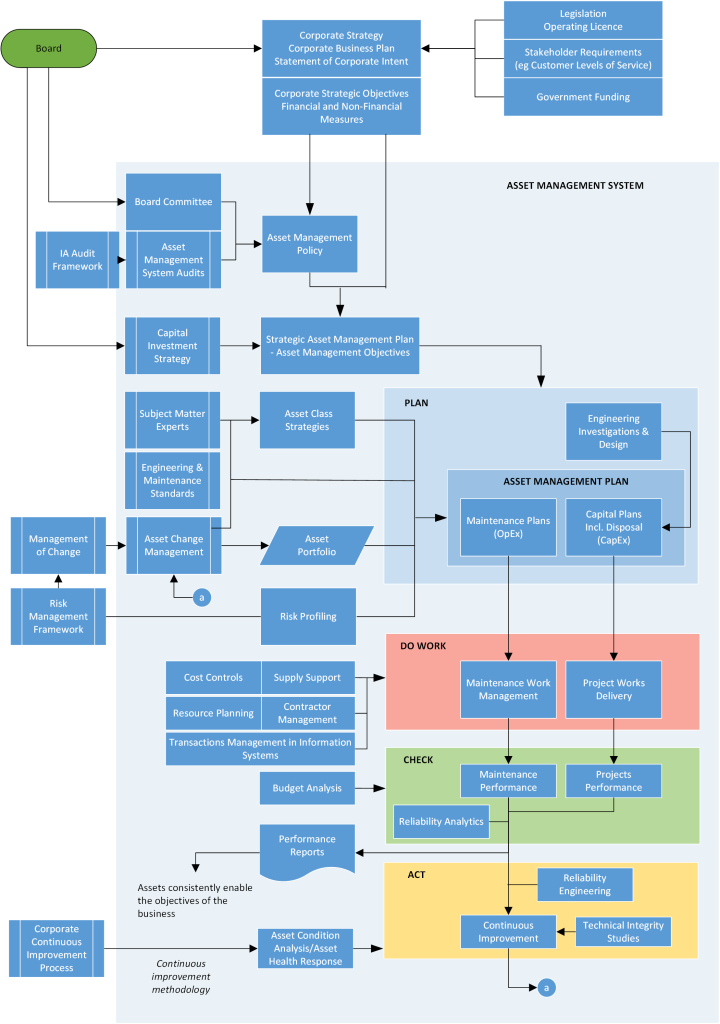Deliver on your business expectations with an appropriate asset management approach
Will your current approach to physical asset management deliver on your business expectations and goals? You need to align your approach to physical asset management with the business expectations and performance requirements. In order to do this you need to establish a systematic asset management approach. We will work with you to develop an asset management approach that is aligned with your business operating model as well as ISO 55001 and other standard methods. The ISO 55001 standard calls this the Strategic Asset Management Plan (SAMP).
Strategic Asset Management Plan
The Strategic Asset Management Plan is a concise document, which:
- Describes how the asset management objectives are formed; and
- Specifies the Asset Management System which will deliver these asset management objectives

Asset Management Objectives
A strategic asset management plan (or asset management strategy) establishes the objectives for your asset management approach:
- The asset management objectives, consider and accommodate the asset management policy, corporate business objectives and internal/external stakeholder requirements.
- The asset management objectives are met by top level frameworks defined for planning work, contingencies, risk management, key operational processes and continual improvement.

Asset Management System
The Strategic Asset Management Plan specifies the design of the Asset Management System which brings discipline to the business by aligning existing processes and strengths into the system and identifying gaps which need to be improved.
- Stakeholder requirements for capable asset performance;
- Measurable objectives which define good performance across many functions of asset management;
- Information systems requirements;
- Contracting and resource management strategy;
- Contingency planning processes;
- Integrated planning processes, balancing business growth with sustaining existing assets;
- Operational processes which need to be managed and for which competency of the people can be tracked and supported;
- Performance measurements and auditing processes to identify opportunities for improvement; and
- Continual improvement planning and delivery.
The value to you and your organisation is the delivery of an easy to read reference document which specifies what must be implemented across the organisation and why. Outcomes include gap identification and initiation of improvement processes which benefit teams and remove waste from the organisation.
An example asset management system framework can be seen below:
